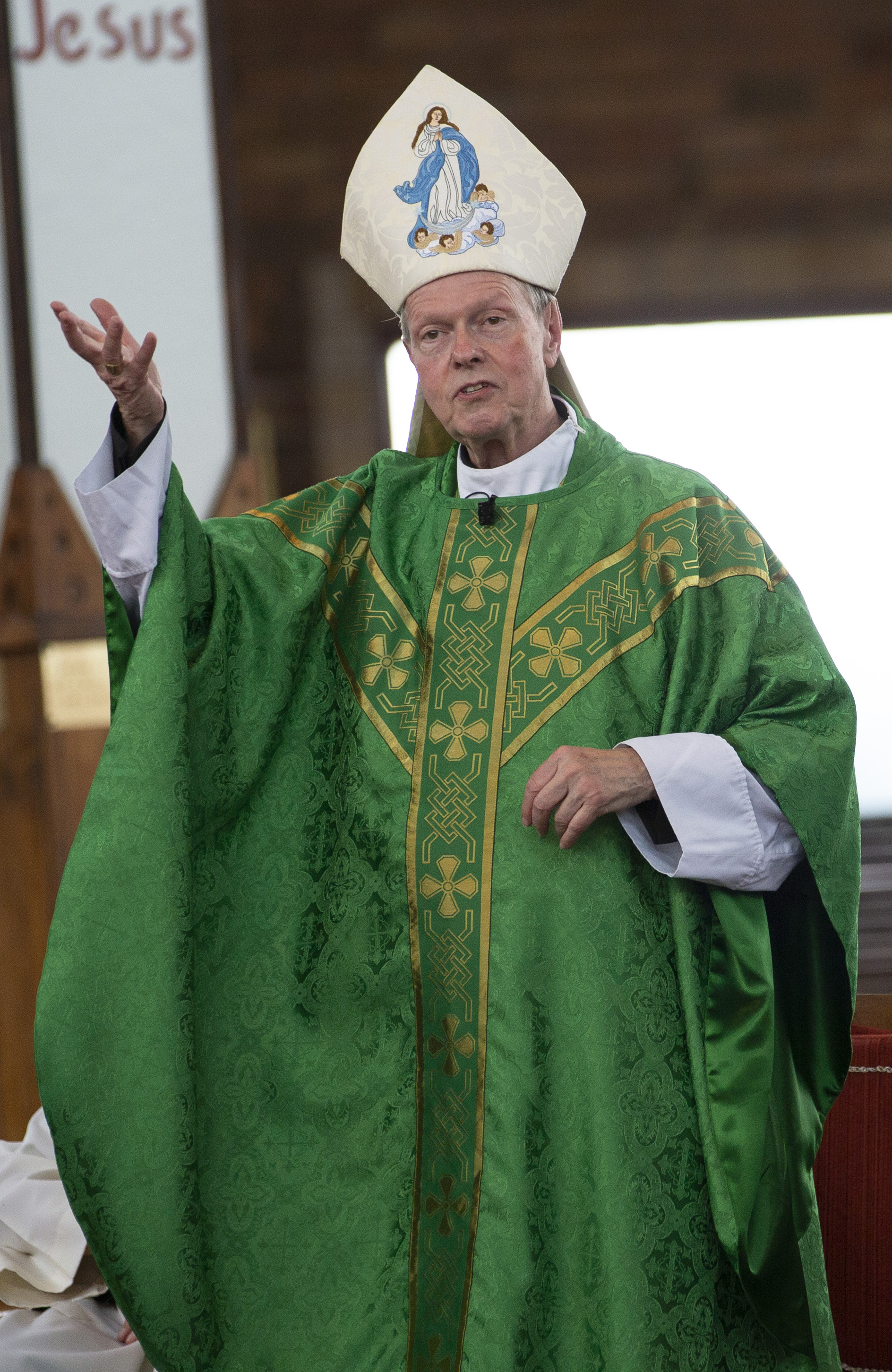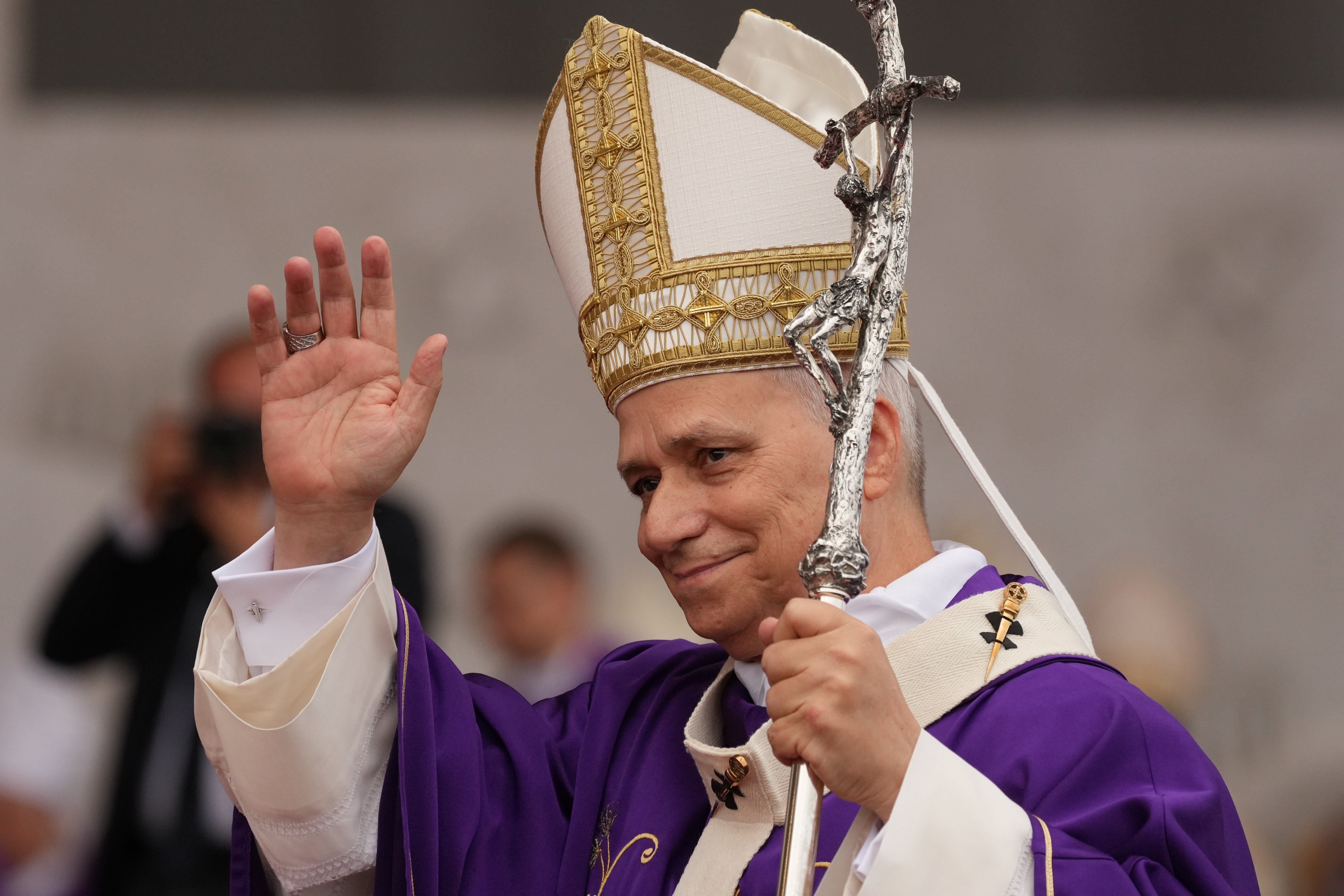November 9, 2022 at 6:48 p.m.
AN APPEAL-ING IDEA!
Quite simply, the Diocesan Appeal funds every diocesan department — there are over 30 departments and ministries which include the Respect Life Ministry to Vocations and Evangelization to Catholic Schools — to ensure the health and future of the 126 parishes in the 14-county Diocese of Albany.
The Diocesan Appeal — which began this year on July 1 and will run until June 30, 2023 — has the goal of raising $6.1 million. That money funds 74 percent of the mission and ministry of the Diocese of Albany, with the remaining money coming from legacies and bequests, interest and dividends from investments, bookkeeping and accounting fees, registration and counseling fees.
But as the Diocese continues in mediation with plaintiff attorneys involved with the Child Victims Act (CVA) cases, and with bankruptcy a legitimate possibility, questions remain about how money donated to the Appeal will be used. Will the money donated to the Appeal be used to pay for CVA settlements? If the Diocese were to go bankrupt, would the Appeal money be used to pay for legal fees during the process?
The answer to both of those questions is no. The Diocese must use 100 percent of the money from the Appeal as the donor intended it for, as with all charitable gifts. It cannot be used to pay for CVA settlements or to pay legal fees during a bankruptcy process. Money used so far to settle lawsuits has come from the diocesan self-insurance fund.
“The annual diocesan budget is set based on expected needs. The allocations for each parish is then based on that budget,” said Father David LeFort, Vicar General for the Diocese of Albany. “The funds received in the annual appeal are received based on that budget and allocations. Thus the funds received are restricted to those needs.”
With that in mind, let’s delve a little deeper into the history of the Appeal and list specific examples of how the money that the parishes donate is spent.
HISTORY
In 1954, as a post-war boom was happening in America, the Catholic Church in upstate New York was undergoing tremendous growth. Churches and schools needed to be built. Vocations grew as well as the mission of the Church. And all this had to be funded.
Bishop William A. Scully came up with the idea to support the burgeoning Church with a diocesan-wide capital campaign called the Bishop’s Development Fund for Religion and Education. The goal of this one-time campaign was to raise $500,000. The Fund was so successful, however, that the Diocese decided to run the campaign every year. During that time, the Diocese of Albany funded the building of 13 parishes, 21 elementary schools, six high schools as well as Maria College.
Although the Fund has changed names — the Bishop’s Development Fund was renamed the Diocesan Development Fund, better known as the DDP, then was changed to the Bishop’s Appeal under Bishop Howard J. Hubbard and is now called the Diocesan Appeal — for the past 68 years it has been an integral part in funding the diocesan mission.
“The principal objective of the Diocesan Appeal is to support the services provided to the parishes by the Diocese,” said Nancy Bielawa, executive director for Stewardship and Development. “So for example, Human Resources, IT, the Tribunal, Faith Formation, Pastoral Planning, Real Property, all of those things are made possible by the Diocesan Appeal.”
Most parishes are essentially running a small business, Bielawa added, and it is quite hard to do that with a limited staff. So help from the diocesan departments is critical.
“What we have done this year is to break it into two categories: mission support and operational support to delineate more the various departments in the Pastoral Center that support the churches,” Bielawa said. “If the Appeal isn’t supported there will have to be cuts in those departments which will inevitably impact the parishes because what we do is directly for the parishes. The departments don’t have any other objectives.”
As Bielawa noted, organizations such as Siena College have annual funds as well but it is a small percentage of the operating budget since tuition, principally, makes up the bulk of its revenue stream. In the Diocese of Albany, an assessment calculation that is based on a three-year average of parish offertory as well as other factors determines what each parish is expected to give to the Appeal.
It can’t be overstated that this is how the diocesan offices fund everything they do; there is no back channel to the Vatican or direct line to the Mother Cabrini Health Foundation asking to cover any shortfalls.
“What I have found is that people who are committed to their faith and the Church, are they disappointed with the CVA and that (the abuse) happened in the first place? Sure, who wouldn’t be. It’s horrific and distasteful and unimaginable,” Bielawa said. “But the people that keep giving or have reactivated their giving, they have reactivated because they want to support the Church.”
Bielawa added that 300 lapsed donors have given during this Appeal period already and the McCloskey Society, which supports the Appeal with gifts of $1,000 or more, has over 400 members and counting already for this Appeal period.
“They don’t have their heads in the sand,” Bielawa added. “You can’t miss stuff happening with the Catholic Church right now, and yet they decided to reactivate support. We also have people who are giving more than they gave last year.”
Let’s look at specific examples of how that money is used by various diocesan departments.
THE RESPECT LIFE OFFICE: The Respect Life Office (RLO) offers annual training, resources and consultation to parish Respect Life coordinators and committees. This year in coordination with the Marriage & Family Office, the Diocese continues to serve women suffering from abortion through Project Rachel, the only diocesan post-abortive ministry. The RLO also sponsors ministry events which include: the Annual Respect Life Forum in which over 70 people attended both in-person and by Zoom; coordinating the diocesan planning for the March for Life each January, in which over 400 people attend annually from the Diocese; and implementing the United States Conference of Catholic Bishops’ initiative “Walking with Moms in Need: A Year of Service.”
CATHOLIC CHARITIES: The Appeal supports a wide array of Catholic Charities’ programs including: CC MOVE which, along with the Regional Food Bank of Northeastern New York and local community partners, has distributed over 710,000 pounds of fresh, frozen and shelf-stable food to over 85,000 people so far this year — the Emergency Energy Assistance Fund — which annually helps over 1,000 people across 450 homes with assistance for their energy bills — food and nutrition programs, the Catholic Charities’ Housing Office, and other services that meet neighbors’ basic needs.
CATHOLIC SCHOOLS: The Diocesan Appeal was instrumental in promoting Catholic Central School, the regional pre-K through Grade 12 school in Latham that is a merger of Catholic Central High School and St. Ambrose. Some of the events in the past year included: Parent Night, which was held at St. Ambrose Parish Center in January for current and prospective students; an engagement survey which sought feedback from faculty, administrators, parents, students, alumni and members of the Futures Committee about what was important to each of them about the new school and what they hoped it would become. More than 750 responses were received; a rebranding of the school, which included a new mission statement, “Academic Excellence. Rooted in Christ;” and a Pep Rally in July in which the new brand was officially unveiled to the students and teachers.
OFFICE OF LAY MINISTRY AND PARISH FAITH FORMATION: This office’s central mission is to support parishes (pastors, parish life directors/coordinators, leaders in various areas of ministry, parishioners), as they serve the People of God. Some of the events they have undertaken in the past year include: Preparing 240 couples for the Sacrament of Marriage. On average 300 couples are prepared every year; offering an annual day of retreat and renewal for pastoral care coordinators and visitation or bereavement ministers. On average 150 attend; conducting Synod sessions for faith formation/youth ministry leaders, respect life coordinators and pastoral care coordinators; and organizing the diocesan delegation to the biennial National Catholic Youth Conference (NCYC). Over 300 young people and adults from the Diocese attend this event which draws over 20,000 participants.
VOCATIONS: The Appeal — nearly one-third of it — pays for the education expenses of seminarians. As an example, Father Stephen Yusko, who was ordained in June 19, 2021, had his entire six years of seminary paid in full through the generous donations.
SOCIAL MEDIA
OSV NEWS
- Arriving at the manger with Caryll Houselander
- Barrett discusses Dobbs decision, Roe’s ‘flawed’ reasoning, life at the court, her faith
- Bishop: To welcome immigrants is to follow God’s ‘divine command’ to care for the stranger
- Jesuit search, recovery of migrant remains finds bodies of 2 women in difficult desert terrain
- In pastoral on Communion norms, Bishop Martin emphasizes Eucharist is communal act of worship
- A dream of Bethlehem community: A house for the poor in village where St. Francis staged first Nativity
- Brooklyn-based book a cry from the heart about roads not taken
- In leaving CEO post, Curtis Martin says he’ll remain on board, ‘stay on mission’ with FOCUS
- Pope thanks priests, encourages them to share responsibilities with laity
- Cardinal Pizzaballa: Gaza’s Christians long to rebuild life after 2 years of war







Comments:
You must login to comment.